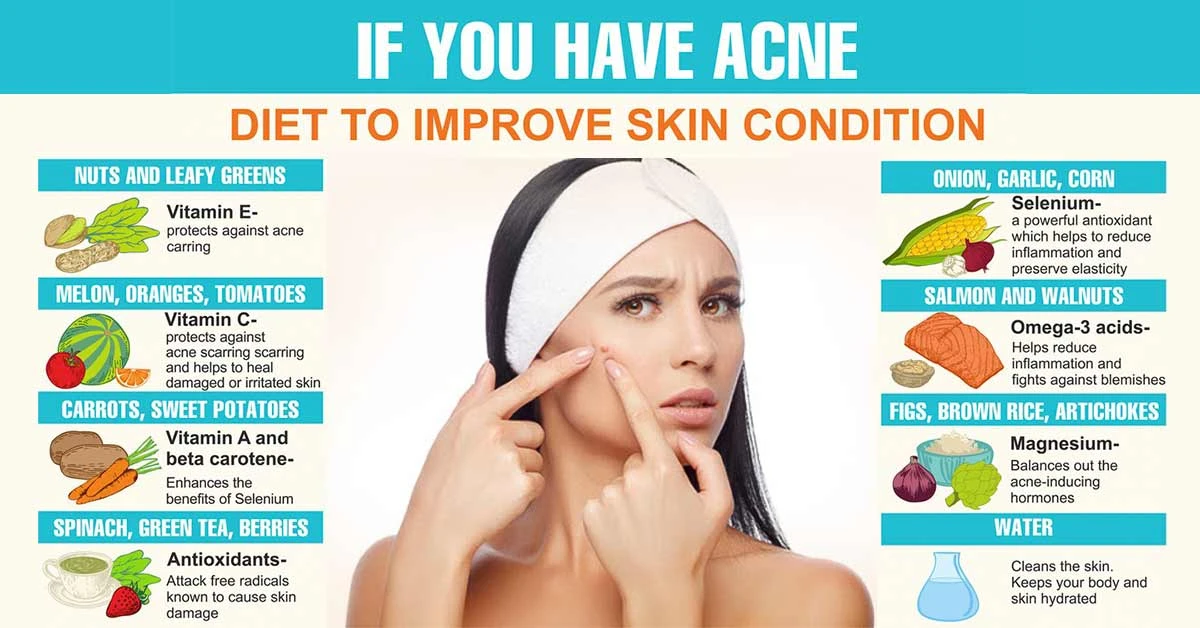Common foods to avoid if you have acne
If you struggle with acne, diet can play a supportive role in managing flare-ups. While food alone may not cause acne, certain items can worsen existing conditions by increasing inflammation, hormone fluctuations, or oil production. Below is a list of common foods to avoid or limit if you have acne, along with explanations of how they can impact your skin.
1. High-Glycemic Foods
High-glycemic foods cause a rapid spike in blood sugar levels. This can lead to a surge in insulin, which may stimulate oil glands and increase inflammation—both of which are known contributors to acne.
Examples:
-
White bread
-
White rice
-
Sugary cereals
-
Chips and crackers
-
Pastries and desserts
Studies have shown that people who consume low-glycemic diets tend to experience fewer breakouts. Replacing refined carbs with whole grains and fiber-rich foods can help stabilize blood sugar and improve skin health.
2. Dairy Products
Milk and other dairy products have been linked to acne in some individuals. Cow’s milk contains hormones (including insulin-like growth factor-1, or IGF-1) that can stimulate oil production and inflammation. Skim milk, in particular, appears more strongly associated with acne than whole milk.
Examples:
-
Skim milk
-
Cheese
-
Ice cream
-
Yogurt (especially sweetened varieties)
If you suspect dairy is a trigger, try substituting with plant-based alternatives like almond milk, oat milk, or coconut yogurt for a few weeks and monitor your skin’s response.
3. Sugary Foods and Beverages
Excessive sugar intake increases insulin levels, which can aggravate acne. Sugar also promotes inflammation throughout the body and may support the growth of acne-causing bacteria.
Examples:
-
Sodas and soft drinks
-
Candy and chocolates
-
Sweetened coffee or tea
-
Fruit juices with added sugars
Instead of refined sugar, opt for natural sweeteners in moderation, like honey or stevia, and increase your intake of fruits with low sugar content such as berries.
4. Fast Food and Greasy Foods
Fast food items are typically high in saturated fats, refined carbohydrates, and sugars—all of which can contribute to acne. Greasy foods may also indirectly affect the skin by promoting inflammation and hormonal imbalance.
Examples:
-
Burgers
-
French fries
-
Pizza
-
Fried chicken
-
Packaged snacks
Cooking at home using fresh ingredients and healthy fats (like olive oil or avocado) is a better alternative for clear skin.
5. Chocolate
While the connection between chocolate and acne remains somewhat controversial, some studies suggest that cocoa combined with sugar and dairy (as found in milk chocolate) may contribute to breakouts.
Solution: Choose dark chocolate (70% cacao or more) with minimal sugar and dairy, if you wish to indulge occasionally.
Conclusion
While everyone’s skin reacts differently, many people with acne find that reducing or eliminating certain foods leads to noticeable improvement. Keeping a food diary can help you identify your personal triggers. Combine dietary changes with a proper skincare routine and consult a dermatologist for personalized advice. Remember, healthy skin starts from within, and small dietary tweaks can lead to big changes in your complexion.

Related Blog